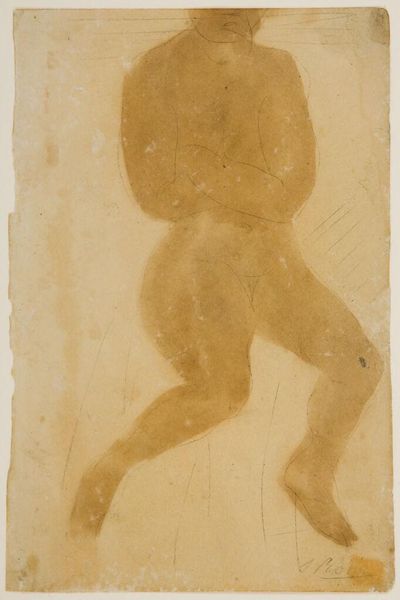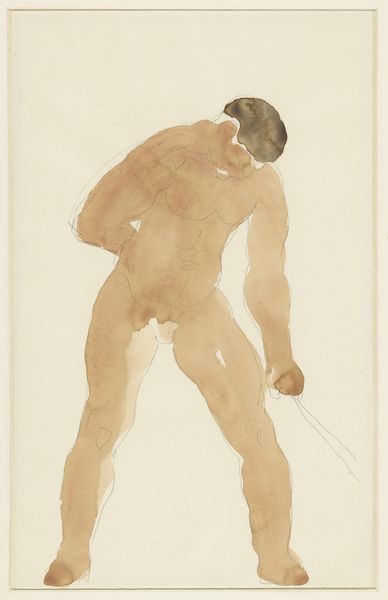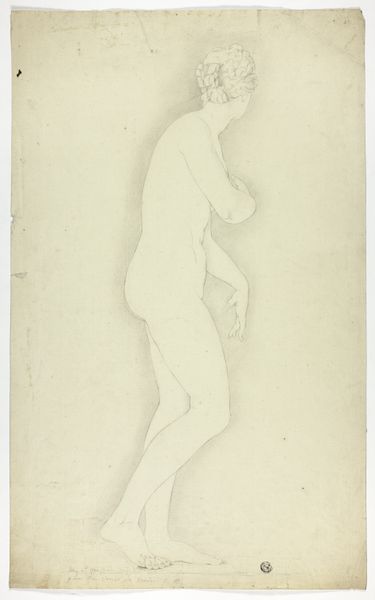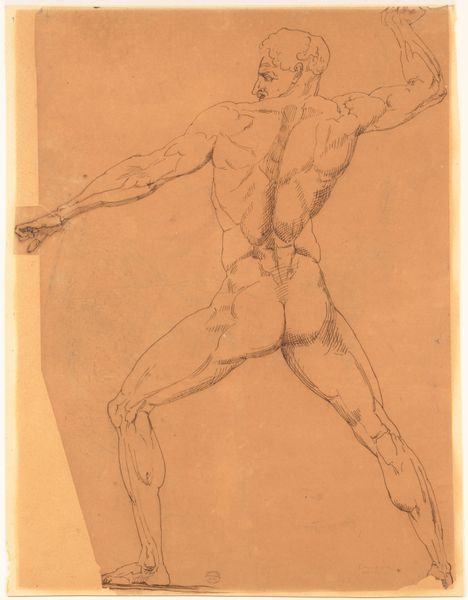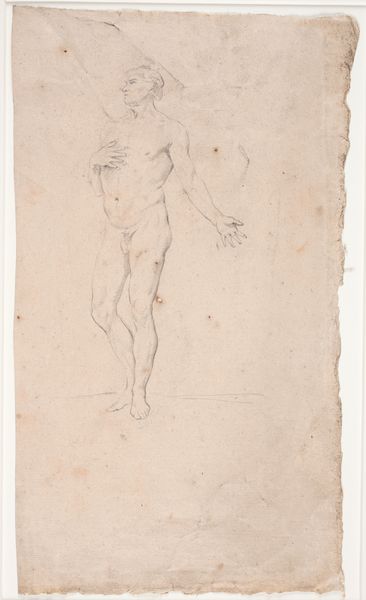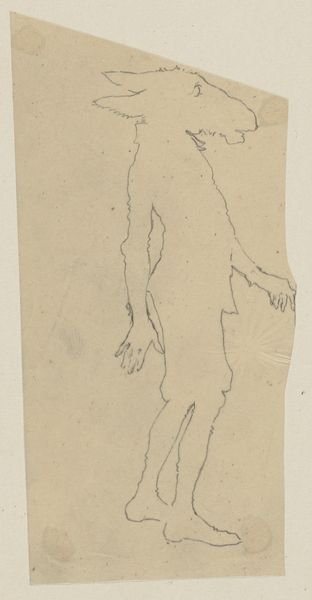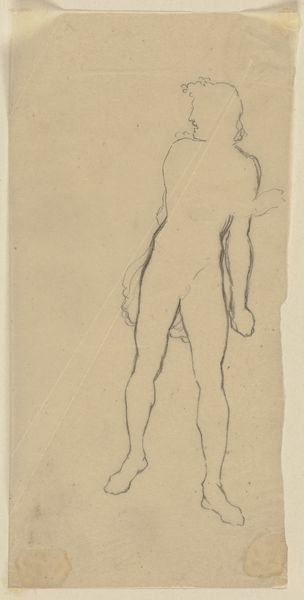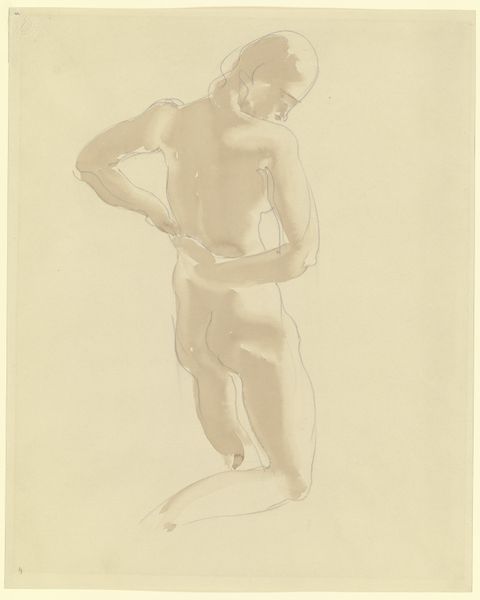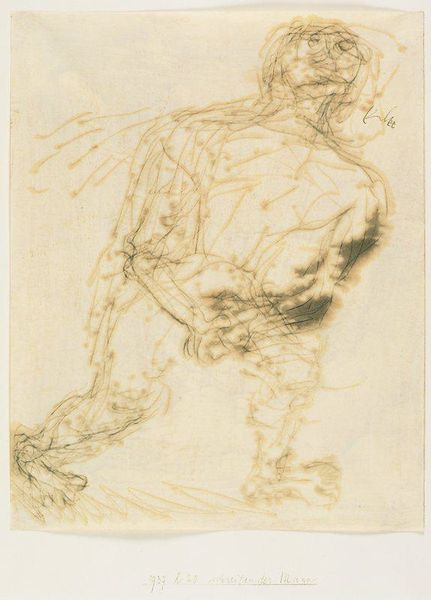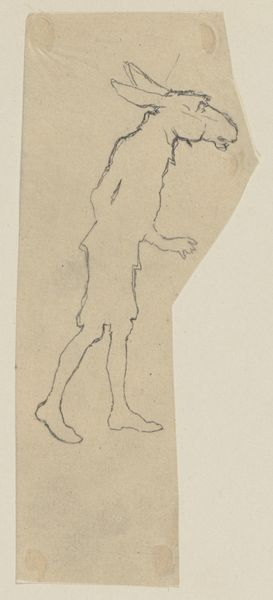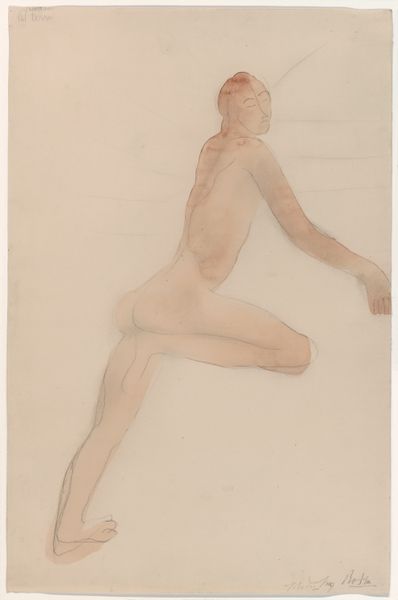
drawing, pencil, charcoal
#
portrait
#
drawing
#
figuration
#
female-nude
#
pencil
#
charcoal
#
academic-art
#
nude
Dimensions: image: 13 9/16 x 8 7/16 in. (34.4 x 21.5 cm) first mount: 14 5/16 x 9 1/4 in. (36.4 x 23.5 cm) second mount: 14 15/16 x 10 7/16 in. (38 x 26.5 cm)
Copyright: Public Domain
Editor: Here we have Auguste Rodin’s "Standing Female Nude," created sometime between 1855 and 1917, employing pencil and charcoal. It’s strikingly…unfinished. Almost like a ghost of a figure. How should we interpret a nude drawing like this in its time, seemingly so raw? Curator: Well, think about the context. Academic art still held immense sway, dictating what was 'acceptable' in representation. Rodin's choice to present such an unidealized, arguably incomplete form was a quiet act of rebellion. How do you think the Salon, for example, would have received it? Editor: Probably with raised eyebrows at best! So, this drawing, though seemingly a simple study, subtly challenges established power structures within the art world itself? Curator: Precisely. It asks: who gets to define beauty? Whose bodies are deemed worthy of artistic representation? And to what degree of realism? Furthermore, consider the burgeoning interest in the ‘sketch’ during this period. What did this interest suggest about changing attitudes towards the artistic process itself? Editor: It’s making me consider the drawing process, and who had access to art education. Was this maybe a model he repeatedly drew to grasp movement and volume? Curator: Quite possibly! These ‘unfinished’ sketches began gaining respect as windows into the artist’s creative thought, previously concealed. Did Rodin mean for the public to see it, or just other artists and students in his atelier? Those possibilities alone inform my perspective. Editor: This conversation shifted my entire perspective from it being unfinished to seeing how intentional it might have been to showcase the power of defying social norms. Curator: Excellent! Now, let's consider Rodin’s patronage and relationships with various political figures... how might that complicate or contextualize this rebellious interpretation?
Comments
No comments
Be the first to comment and join the conversation on the ultimate creative platform.

